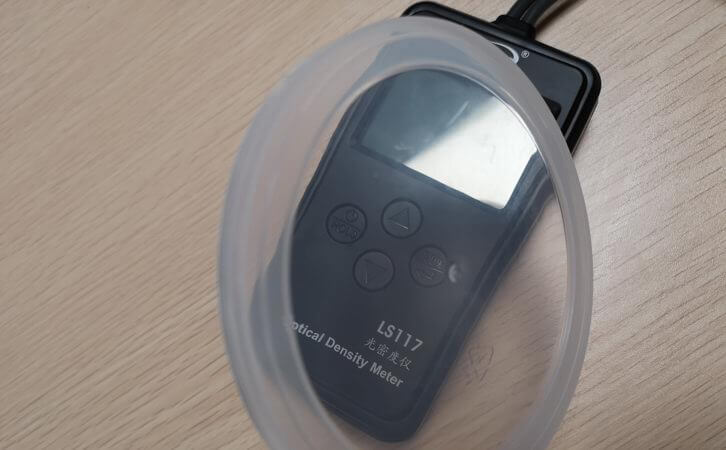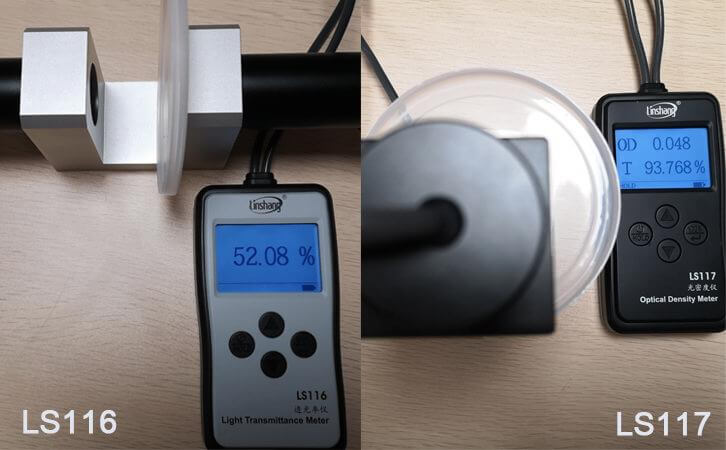Testing the Transmittance of Polyethylene Materials
Many customers choose the wrong instrument when testing translucent materials due to lack of understanding of light transmittance. At present, many light transmittance meters on the market are designed for colorless and uniform transparent materials, and for testing translucent materials, a light transmittance meter using a diffuse transmission principle is required.
The picture below shows the cover of a food can made of polyethylene material. From the figure we can see that the lid is white and foggy. Through the center of the cover, you can basically see the appearance and color of the instrument on the table, but it is easy to see that the color of the instrument's pure black casing is lighter. And by looking at the edge of the instrumentt on the table through the edge of the cover, it is clear that the edges are very blurred. Such materials are what we often call translucent materials.

Many customers will purchase light transmittance meter suitable for regular transmission materials to test translucent materials. After testing, users often find that the measured transmittance data is very small.
The transmittance of this polyethylene material should be very high, but when we use the LS116 light transmittance meter with regular transmission principle, the light transmittance is only 52.08%, and when tested with the LS117 light transmittance meter, the light transmittance can reach 93.768%. This is because the LS117 light transmittance meter uses the diffuse transmission principle. Of course, if you want to test some matte, white or dark materials, this one is also recommended.
In addition to being used to test light transmittance, the LS117 light transmittance meter can also be used to test optical density. The OD value read from the top of the screen of the LS117 above is the optical density. Optical density is a numerical value that reflects the light-shielding ability of a material. Optical density has no dimension unit and is the logarithm of the ratio of incident light to transmitted light or the logarithm of the reciprocal of transmittance.
- Lampshade Transmission Densitometer Measure the Transmittance of PC Lampshade
- About the custom range of Linshang LS117 densitometer
- Transmittance Measurement of Plastic PC
- Vacuum Coating Thickness Measuring System
- Fourth Upgrade Vacuum Coating Online Thickness Measuring System
- Lampshade Transmittance Meter Measure the Transmittance of PC Lampshade
